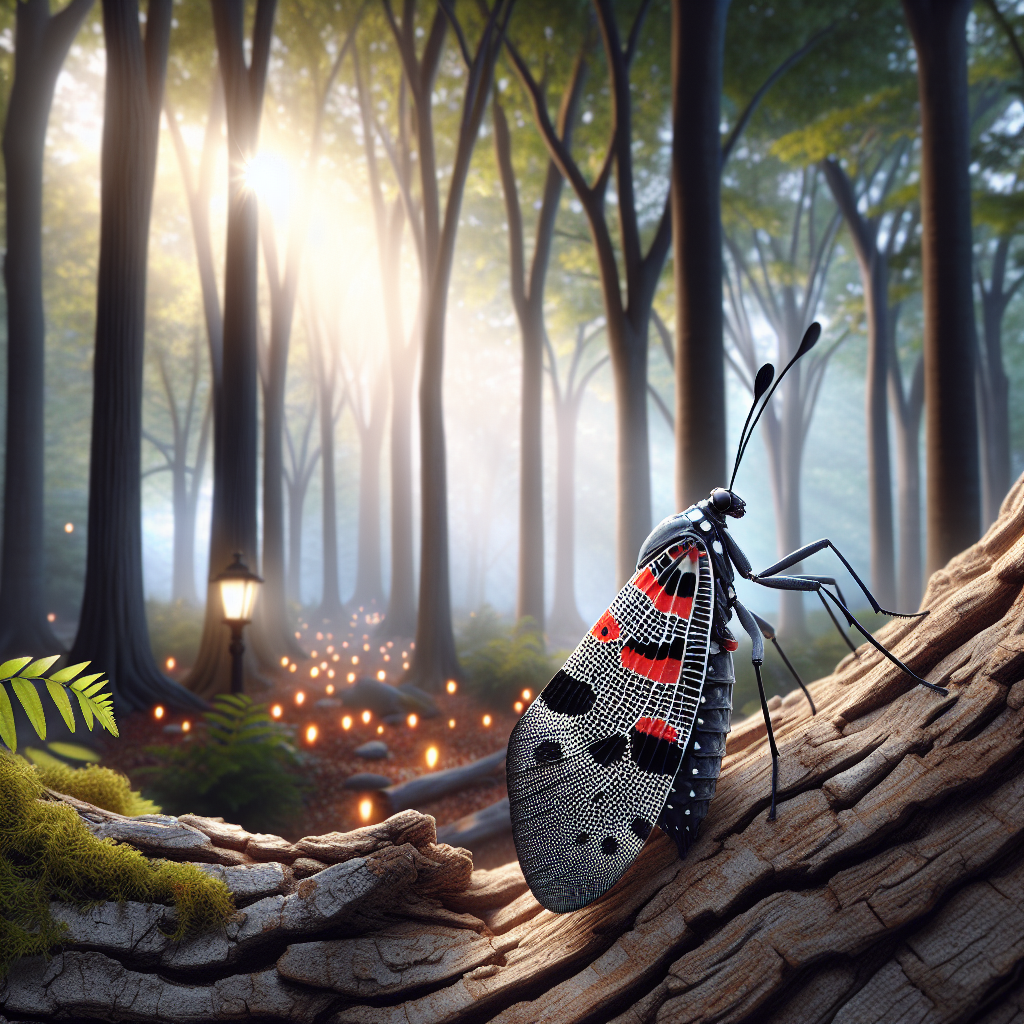
Invasive Spotted Lantern Fly Detected in Arlington
Arlington is currently grappling with an unwelcome pest – the spotted lantern fly – a threat to the town’s natural ecosystem. This invasive insect, native to China, was reported on November 14 as it found its way into Arlington, raising alarms among residents and environmentalists alike.
Understanding the Spotted Lantern Fly
The spotted lantern fly infestation is notorious for its destructive nature. Known to feed on over a hundred species of plants, this pest causes significant damage mainly by targeting grapevine, maple, walnut, and fruit trees, particularly the “Tree of Heaven” (Ailanthus altissima).
How They Inflict Damage
- The insect employs piercing, sucking mouthparts to feed on plants.
- During feeding, it excretes a sticky substance called honeydew, leading to the growth of sooty mold, which harms the plants.
Tawny Simisky from the UMass Extension highlights that this pest’s feeding habits threaten both agricultural and ornamental plants. Meanwhile, Phu Mai, communications director at the Massachusetts Department of Agricultural Resources, reported that by the first week of November, the pest had infested more than a dozen trees around the intersection of Mystic Street and Mass. Ave.
Arlington’s Vulnerable Trees
Arlington houses several “Trees of Heaven” – the primary targets of the lantern fly. Steve Moore, the co-chair of Arlington’s Tree Committee, expressed his concern over the threat to other significant species such as maples, which constitute a large portion of the town’s street trees. The potential risk to Norway maples is particularly troubling.
View Arlington’s Tree Inventory Map for more details on tree species distributed across the town.
The U.S. and Massachusetts Impact
Since first being reported in Pennsylvania in 2014, the spotted lantern fly has spread across fourteen states along the East Coast. In Massachusetts, it was first noted in 2021, with numerous municipalities, including Arlington, reporting infestations by 2024.
View the map of affected municipalities in Massachusetts.
The Species’ Rapid Spread
Tawny Simisky explains how female lantern flies can lay extensive quantities of eggs, ranging from 30 to 50, on virtually any surface. This includes not only greenery but also fences, playground equipment, and woodpiles, making detection challenging.
By November, most adult insects have perished due to the cold, but they have already laid eggs. These eggs will overwinter, potentially hatching from April through June, posing another seasonal threat.
The Summer Nuisance
Though harmless to humans and animals, the spotted lantern fly’s presence can become overwhelmingly bothersome. They tend to swarm in large numbers and, infected areas often see an influx of other insects such as ants, bees, and wasps attracted to their honeydew secretions. The resulting mold can coat surfaces like leaves, picnic tables, and vehicles left under infested trees.
Mitigation Efforts
Residents can combat this threat by inspecting for egg masses that resemble cracked gray mud on surfaces. Scraping and disrupting these eggs can prevent the next generation from hatching. This proactive approach in winter is vital for controlling the infestation’s spread.
Steve Moore emphasizes, “You can’t control mother nature, but you can help guide it. That’s what we’re trying to do to minimize the problem.”
Action Steps for Residents
The Massachusetts Department of Agricultural Resources urges residents to report sightings of the spotted lantern fly. The detailed report should include the discovery location and any plant damage observed. Submissions can be completed through the official reporting form.
If found on non-residential property, owners will receive further instruction, including mandatory training to identify and control the spread of the insect. For comprehensive fly management and preventive measures, residents are encouraged to consult resources provided by UMass Amherst.
Contributed by Assistant Editor Brynn O’Connor
Source: https://www.yourarlington.com/arlington-archives/town-school/environment/22662-lanternfly-120424.html

